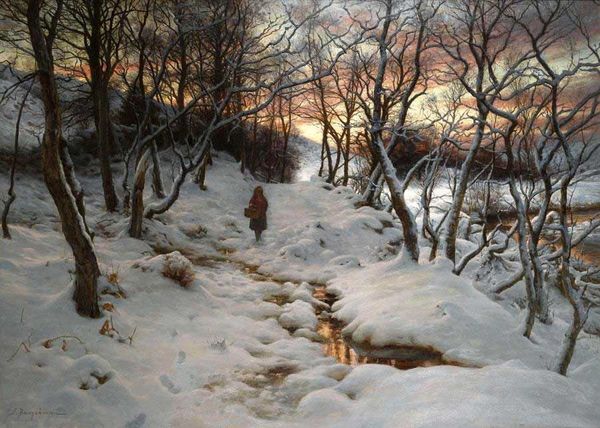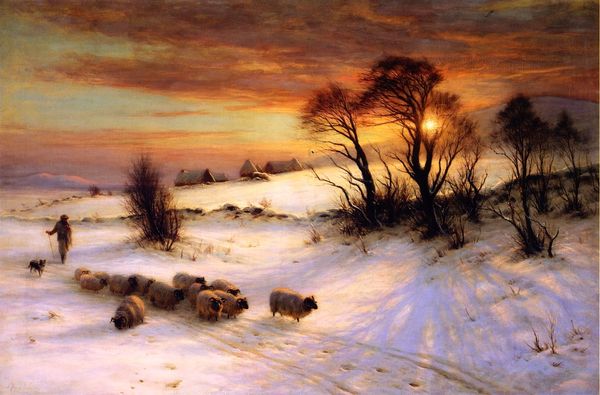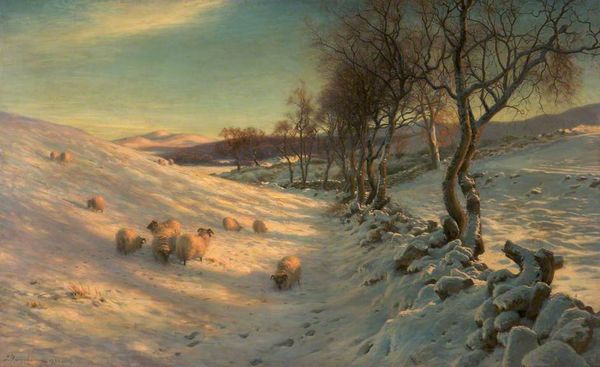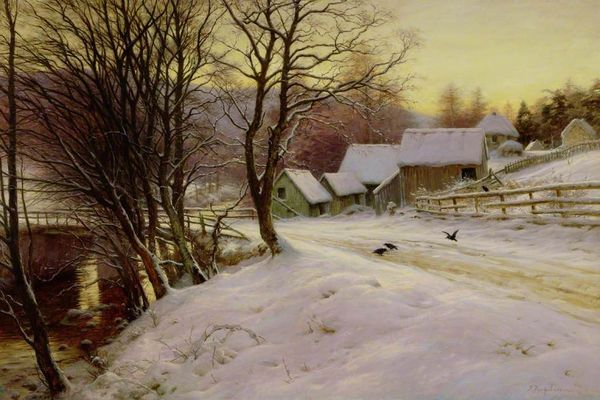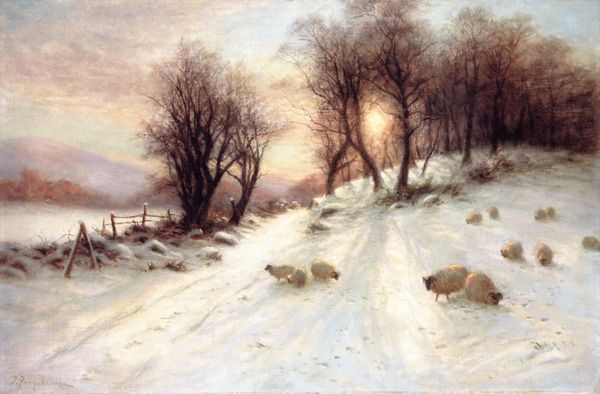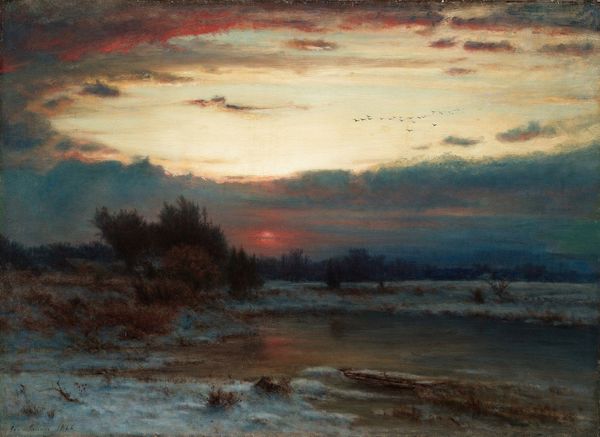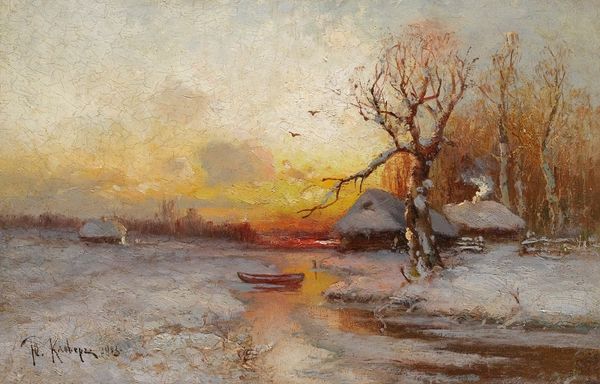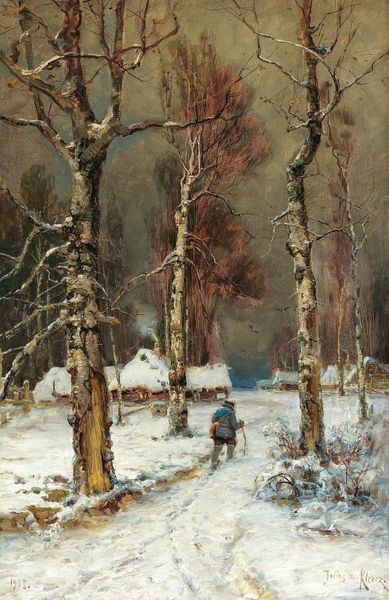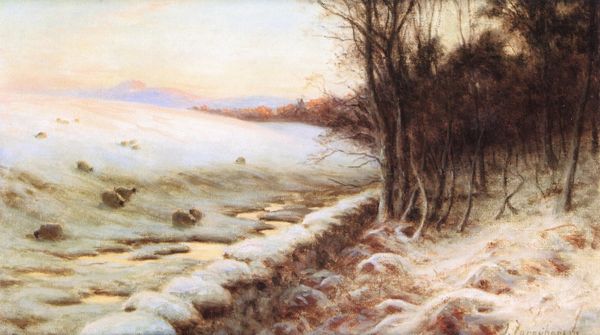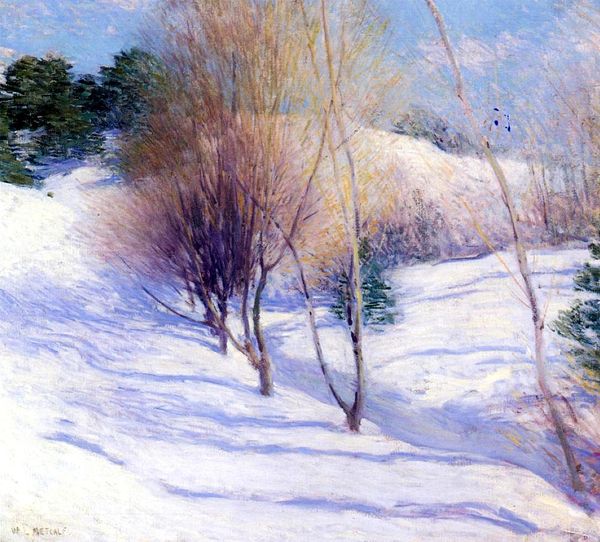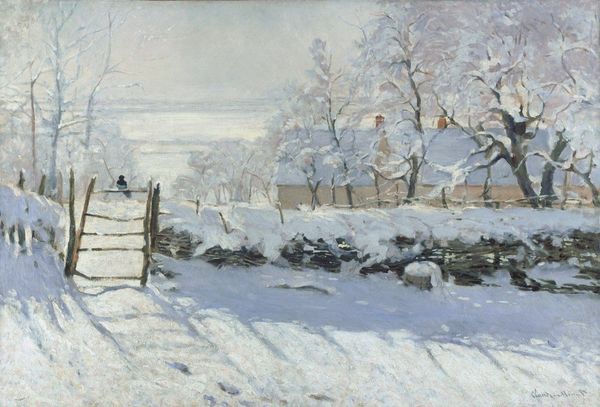
Copyright: Public domain
Editor: Joseph Farquharson's "When the West with Evening Glows," created in 1901 using oil paint, evokes a strong sense of stillness and isolation to me. What aspects of the process or material choices do you find particularly striking? Curator: The impasto application of oil paint to render the snow is key. Consider the laborious act of building up those layers. How does Farquharson manipulate the medium to represent not just snow, but the experience of the cold, the quiet? Also, look at the division of labor – did he grind his own pigments? How accessible were these materials? These elements highlight the relationship between the artist, his tools, and the economic structures that support him. Editor: That's fascinating. I hadn't considered the literal labor involved in creating that texture. Does the mass availability of modern art supplies change the interpretation of pieces like this? Curator: Absolutely. Mass production of art supplies shifts our focus. When paint is readily available, we might prioritize the 'genius' of the artist over the material circumstances. Here, acknowledging the materiality re-grounds the art within its social and economic reality. Farquharson wasn't just painting a pretty scene; he was engaging with the resources at his disposal, consciously or unconsciously commenting on labor through the very act of creation. What can be learned from this consideration? Editor: It definitely pushes me to consider the painting as an object resulting from both artistic vision and material conditions. I will carry a fresh view of artworks I'll encounter down the road. Curator: Precisely, recognizing the artwork as the end result of many steps, processes, and considerations makes for a far more grounded interpretation.
Comments
No comments
Be the first to comment and join the conversation on the ultimate creative platform.
